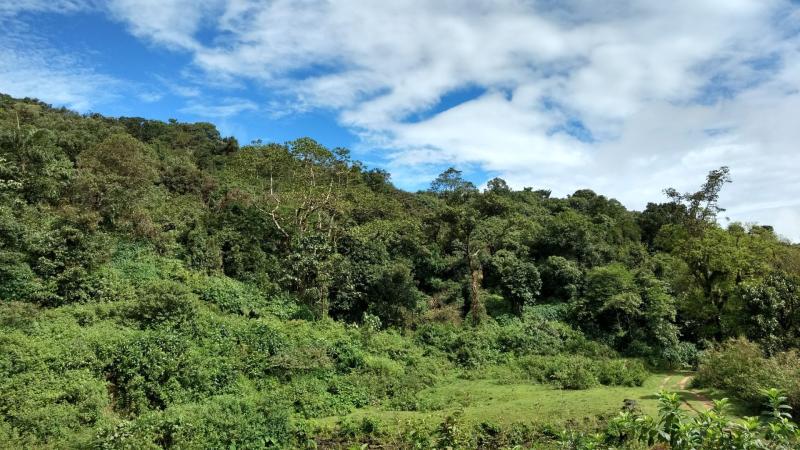
In a recent article published in the `Science’ magazine, titled ‘When the cure kills—CBD limits biodiversity research’, researchers have questioned the Convention on Biological Diversity (CBD), a framework formulated to conserve biodiversity.
The CBD is an international legally-binding treaty signed by 168 countries and started into force on 29 December 1993. Its major goals include biodiversity conservation; the sustainable use of biodiversity; and the fair and equitable sharing of benefits arising from genetic resources originating from plants, animals, or microbes. The last of these aims is further formalised in the Nagoya Protocol.
“The Convention recognizes that biological diversity is about more than plants, animals and microorganisms and their ecosystems—it is about people and our need for food security, medicines, fresh air and water, shelter, and a clean and healthy environment in which to live”, says the website of CBD.
Although the intention seems to be benevolent, the authors of the current article argue that the CBD framework is defeating its intended purpose due to an excessive regulatory regime it has created. Supported by 172 co-signatories from 35 countries, the authors cite the policy as exclusionary since it limits biodiversity research, curtails international collaboration and restricts access to genetic resources.
The authors also point out that several member countries of CBD, especially those that are rich in biological resources, in the apprehension of commercial misuse of these resources, are enforcing legal restrictions on biodiversity research in the field for resident scientists as well as international collaborators.
“Biodiversity science in biodiversity-rich countries already suffers from neglect by the national science funding agencies. Overzealous regulators shackle it further to the detriment of society that, apart from nature, is the ultimate beneficiary of advances in our knowledge”, says Prof. Kamaljit S Bawa from the Ashoka Trust for Research in Ecology and the Environment (ATREE), who is an author of the present article and was recently conferred the prestigious Linnean Medal in Botany.
In most developing countries, conservation is seen purely as a protective measure where the focus is solely on protecting and preventing the loss of its resources. However, it is essential to know the identity of the organism that is being protected. There are an estimated 12 million species of eukaryotic organisms—those whose cells have a nucleus enclosed within membranes—in the world. So far, we formally recognise fewer than 2 million of these. To effectively conserve a species, it is necessary to have a scientific understanding of its ecology, behaviour to threat, anthropogenic activities and any other disturbances it may face.
Since an estimated one in five species on the planet is in danger of extinction due to anthropogenic activities, and several of them are said to be going extinct even before they are being discovered, taxonomic studies that document biodiversity are paramount. And, this requires researchers to collaborate irrespective of territorial boundaries, have easy access to specimens without bureaucratic hurdles and an ecosystem that supports non-profit research-related activities.
With the enforcement of CBD, the signatory countries now own the biodiversity that lies within their boundaries and can make use of the genetic resources appropriately. This provision has led to many countries stepping up legislative processes to tighten their control over genetic and biodiversity resources in their territory. As a consequence, obtaining permits for entry into protected areas and access to collect biological samples or specimens for non-commercial research has become increasingly difficult in many countries across South Asia, East Africa, and South America. This also includes countries like Brazil and India that have global biodiversity hotspots like the Amazon rainforests, the Western Ghats and the Eastern Himalayas.
Following the CBD’s obligations, India enacted the Biological Diversity Act in 2002 and notified the Biological Diversity Rules in 2004 for the preservation of biological diversity. The National Biodiversity Authority (NBA) and the State Biodiversity Boards were established to implement provisions under these acts. The sections under the law not only put restrictions on commercial utilisation of biological resources but also on the non-commercial research-related activities.
In India, for instance, researchers are not allowed to collect or study biological specimens without the permission of NBA or the respective State Biodiversity Boards, as appropriate. Also, the results of research carried out here are not be transferred to foreigners or non-residential citizens without the prior approval of NBA. Since getting permits from the NBA is a cumbersome and time-consuming process, many ecologists in India opine that the regulation not only curbs the process of advancement in knowledge but also prevents international collaborations which are essential for the progress of research in any country.
The authors point out that national legislative measures, like the one above, inspired by the CBD and the Nagoya Protocol have made biodiversity exploration and research, particularly those which require access to protected areas and international collaboration, cumbersome and in some cases, impossible. Although the strict regulations predominantly arise from concerns around biopiracy and misuse of biological resources, they curtail research and scientific advances in taxonomy studies, which in turn, limit our understanding of species and their conservation, they argue.
If CBD is restricting research activities in the name of protection, then what is the alternative? The authors of the study propose multiple solutions to advance biodiversity research within the CBD framework. They suggest that at a policy level, not-for-profit research that is intended for the public domain should be differentiated from commercial research which leads to proprietary rights.
The authors also recommend following the International Treaty on Plant Genetic Resources for Food and Agriculture (ITPGRFA), popularly known as the International Seed Treaty, to be a promising model. It is an international agreement that conforms to the CBD, which aims at ensuring food security through conservation, exchange and sustainable use of the world's plant genetic resources.
“One possible course of action for the Conference of the Parties to the CBD might be to add an explicit treaty or annexe to promote and facilitate biodiversity research, conservation and international collaboration”, says Dr. Priyadarsanan Dharma Rajan, Senior Fellow at ATREE and a co-author of the article.
Such a treaty will address legal uncertainties in the governance of global research commons like type specimen held in various museums and herbariums across the world, he adds.
The authors are hopeful that against all the odds, the parties to CBD will address the existing gaps in the framework that will help biodiversity researchers and the biodiversity they endeavour to discover and protect.






